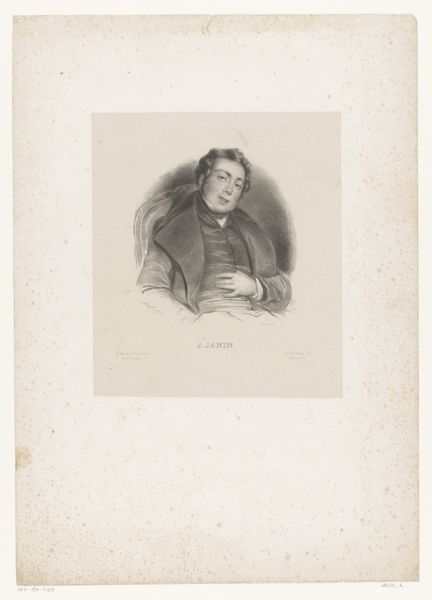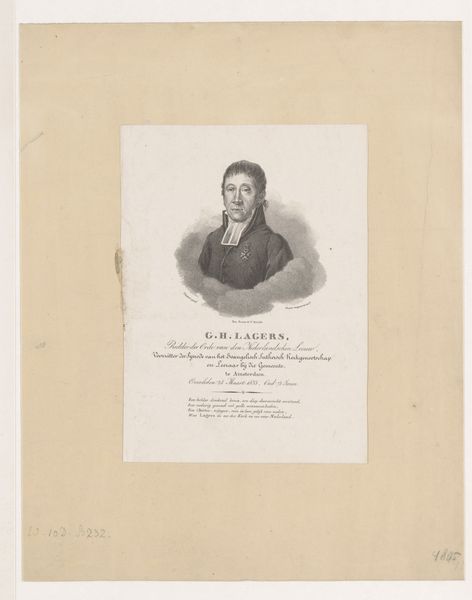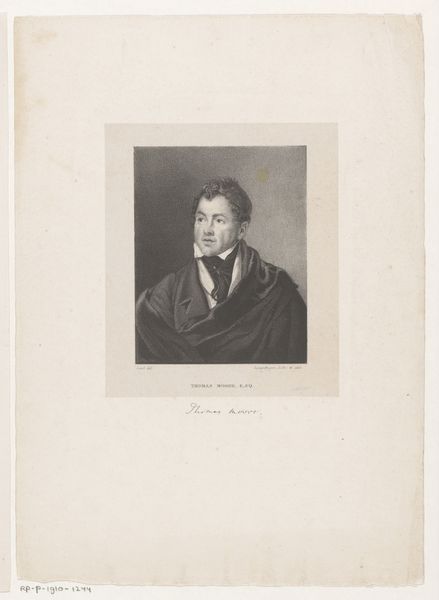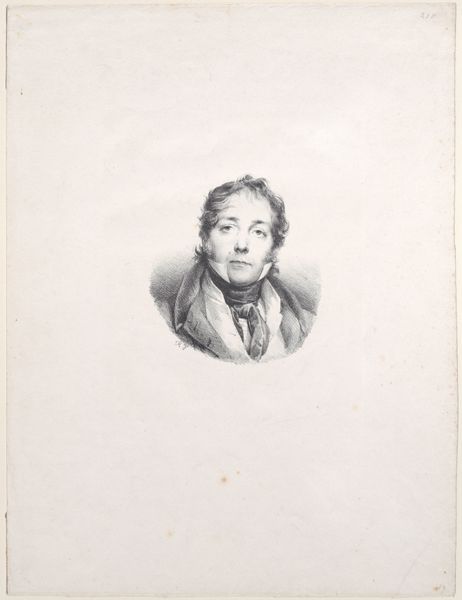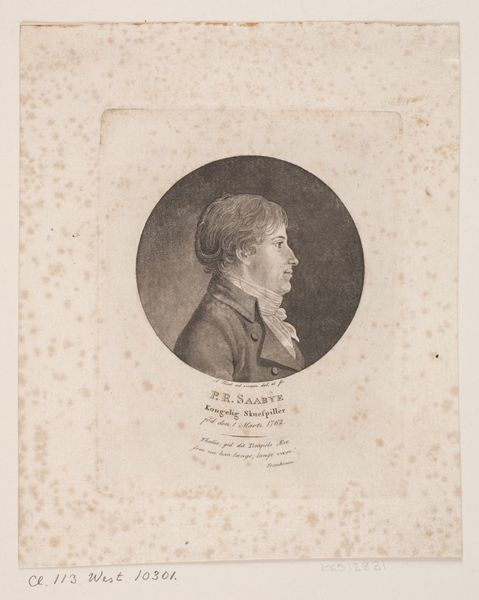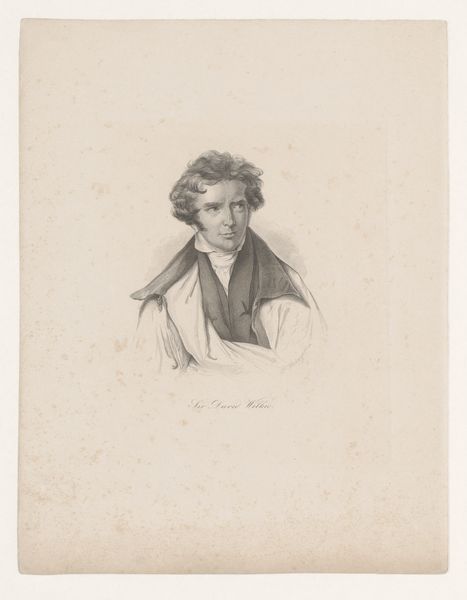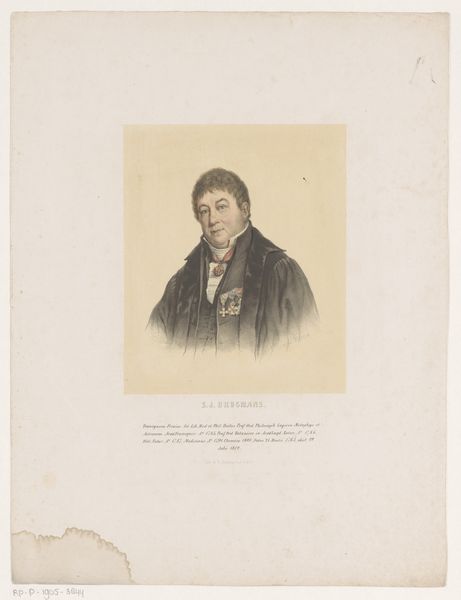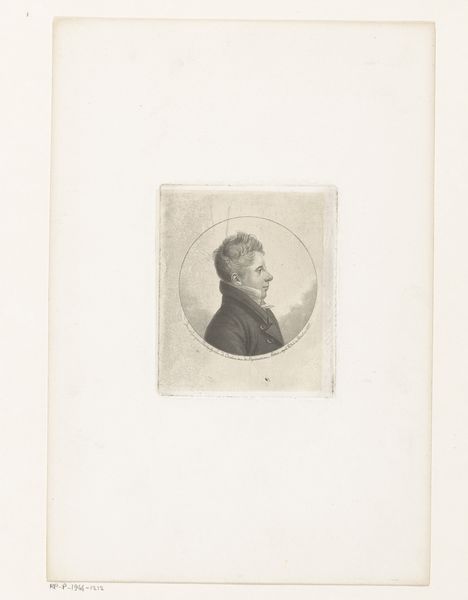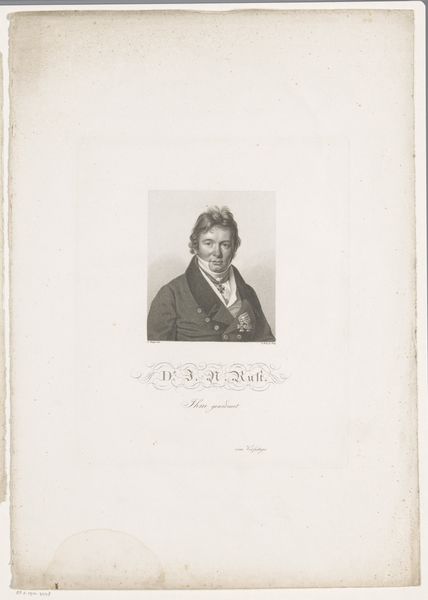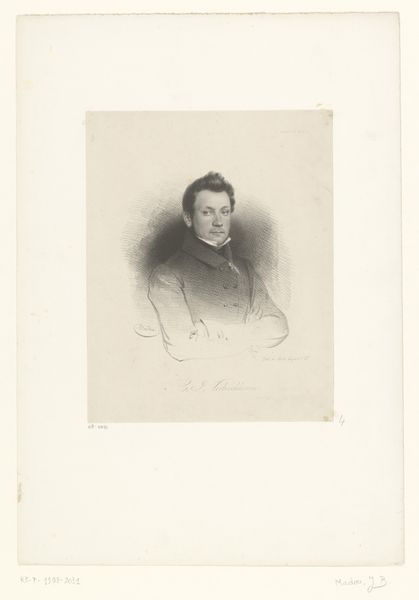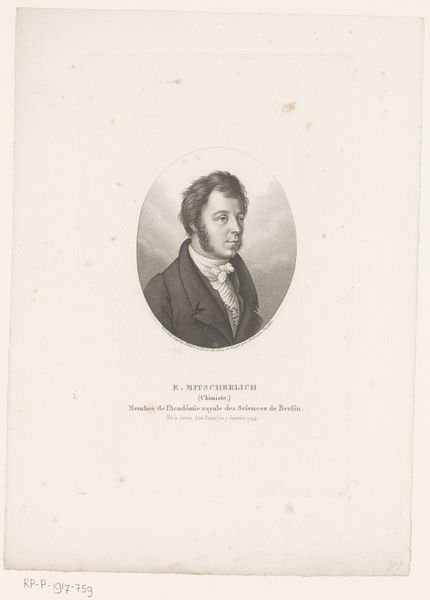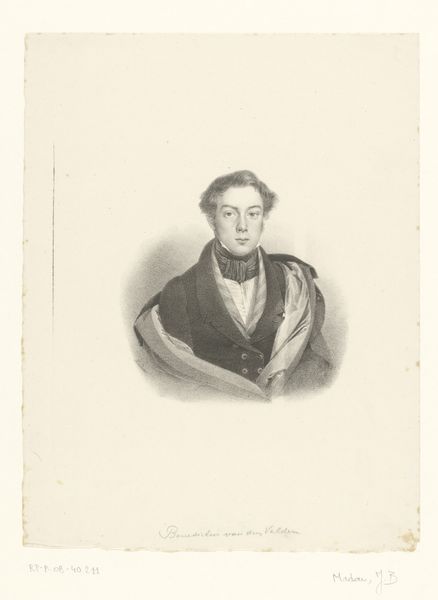
engraving
#
portrait
#
pencil drawn
#
neoclacissism
#
old engraving style
#
pencil drawing
#
engraving
Dimensions: height 205 mm, width 122 mm
Copyright: Rijks Museum: Open Domain
Curator: Let's turn our attention now to this engraving from the 19th century, simply titled "Portret van Luden," by the artist L. Hess. It's a compelling example of neoclassical portraiture. Editor: My first impression is of understated elegance. The muted tones and delicate linework evoke a sense of calm and contemplation. The texture itself feels so refined. Curator: Absolutely. Consider the deliberate composition: the figure occupies only the upper portion of the frame, allowing for ample negative space that emphasizes his presence. We could analyze the delicate use of shading to create volume. How does it strike you? Editor: I am particularly interested in understanding its historical placement. Given that engraving was a relatively accessible medium, what would have been the implications of commissioning a portrait during this period? Was it intended for a specific audience or public sphere? It seems like this "Luden" occupied an elevated social standing. Curator: Precisely. We should analyze how L. Hess employed the engraving medium. The precise hatching and cross-hatching, producing tonal gradations. The control is impeccable. Note, also, how his gaze seems to penetrate the veil of the paper! Editor: Yes, the gaze and the overall pose suggest something of an informed public figure, maybe even a member of an educated elite, in my view. Given the stylistic choices that were available, who could be his intended audience? Also, how were images like these consumed and circulated within their communities? Was it a public demonstration of power? Curator: In terms of the symbolic language in his art, let's focus on his clothes. Note the tailored cut of the jacket, high collar. The attire indicates social status. There are many elements which denote wealth. Editor: The formal details and technical skill involved also speak to certain cultural values within the social world and the institutions supporting it. This leads us to ponder questions regarding representation, power dynamics, and identity construction during that era. Curator: I would highlight the remarkable degree of formal refinement. The lines give the composition incredible depth. Editor: This portrait, despite its small scale, offers us insights into the artistic conventions and socio-political undercurrents of 19th century portraiture. It also compels viewers to question the nature of representation, the agency of the sitter, and its meaning. Curator: Ultimately, it exemplifies artistic finesse while presenting compelling questions. Editor: I appreciate gaining some insight regarding both the individual represented and also what it tells us regarding public perception.
Comments
No comments
Be the first to comment and join the conversation on the ultimate creative platform.
